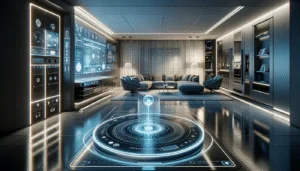Last updated on July 5th, 2025 at 07:32 am
When it comes to designing your dream home, lighting is often overlooked. But did you know that professional lighting design can completely transform the way your home looks, feels, and functions? A masterfully planned lighting setup goes beyond simple illumination, enhancing every corner to maximize both aesthetics and usability.
Whether you want to create a cozy ambiance, highlight architectural details, or improve your home’s overall efficiency, professional lighting design holds the key. This blog explores the benefits, essential elements, and common mistakes to help you unlock the full potential of lighting in your home.
Why Professional Lighting Design Is Worth It
Enhancing Ambiance and Mood
Lighting sets the tone for every room. Warm lighting can make a living room inviting, while cooler tones in a kitchen provide a clean, energized vibe. Professional lighting designers carefully layer light to evoke specific emotions. It’s not just about brightness – it’s about creating an atmosphere that matches how a space is used. For instance, dimmable lights in a bedroom can help unwind after a long day, while spotlights in an art corner draw attention to your collection.
Improving Functionality and Usability
Practicality matters. A well-designed lighting plan ensures that every task is made easier with proper illumination. Imagine reading without the glare of overhead lighting or cooking with bright task lights over the counter instead of dull shadows. Choosing the right balance of ambient, task, and accent lighting helps ensure every corner of your home serves its intended purpose seamlessly.
Increasing Property Value
Smart investments in lighting can significantly boost your home’s value. Buyers often notice details like well-lit interiors that highlight architectural or design features. Layered and tailored lighting adds a sense of luxury, making homes more appealing on the market. A home with an expertly designed lighting plan feels more polished and functional, giving it an edge over others.
Saving Energy and Reducing Costs
With energy-efficient fixtures and smart lighting systems, professional lighting design can help lower electricity bills. Designers often use LED lights, which consume far less energy while delivering high-quality light. They also strategically position fixtures to maximize output, so you’ll need fewer lights to brighten a space. Add dimmers and programmable controls to further fine-tune energy usage based on mood or time of day.
Key Elements of Professional Lighting Design
Layered Lighting
Great lighting design is all about layers. It combines three types of light to create depth and balance in a space:
- Ambient Lighting forms the base and provides overall illumination. Think ceiling lights or natural sunlight.
- Task Lighting is focused and functional, helping with activities such as reading or cooking. Examples include desk lamps or under-cabinet lights.
- Accent Lighting highlights architectural features, artwork, or textured walls. Spotlights or LED strips are common choices.
Color Temperature and its Effects
The temperature of light is measured in Kelvins (K), and it significantly impacts a room’s feel. Cooler light (around 4000K–5000K) works well in areas where focus and clarity are essential, like offices or kitchens. Warmer light (2700K–3000K), on the other hand, promotes relaxation in bedrooms and living rooms. Striking the perfect balance of temperature across your home ensures comfort while boosting productivity in key zones.
Fixture Selection and Placement
The wrong fixture or poor placement can ruin the aesthetics of even the most well-designed space. Take into account the purpose and size of each room when selecting fixtures. Large pendant lights may overpower small spaces, while tiny recessed lights might underwhelm in larger rooms. Expert placement ensures even light distribution, making rooms both functional and visually appealing.
Smart Lighting Systems and Controls
Welcome to the future of lighting! With smart lighting systems, you can control brightness, color, and even create lighting schedules from your phone. These systems not only offer convenience but also enhance energy efficiency. Forgot to turn off the lights before leaving? No problem. A smart home app will take care of it for you.
Common Lighting Mistakes and How to Avoid Them
Even the best furniture and decor can fall flat with poor lighting. Here are some pitfalls to steer clear of:
- Over-lighting or Under-lighting Too many lights can make a space feel harsh, while too few create shadows and reduce functionality. Layering light is key to achieving balance.
- Ignoring Natural Light Sources Overhead fixtures shouldn’t be your only focus. Work with the natural light coming in through windows and skylights to brighten spaces while reducing energy usage.
- Mismatching Fixtures with Room Style Lighting should complement your interior design. Sleek, modern fixtures might not work in a vintage living room, and ornate chandeliers can feel out of place in a minimalist bedroom.
Illuminate Your Dream Home
The way your home is lit directly impacts how you experience it. Professional lighting design transforms ordinary spaces into extraordinary ones by enhancing functionality, amplifying comfort, and unlocking your home’s true charm. To maximize its potential, consider consulting with a lighting professional who can help you secure an expertly designed, energy-efficient system tailored to your needs.
Don’t underestimate the power of good lighting—it’s the game-changer you didn’t realize your home needed.
Read more: Teen Patti or Andar Bahar Which Game is Better for You on Nagad88
A Guide to Choosing the Right Tools for Better Email Outreach
Add a Premium Touch with Custom Belly Bands from CEFBox




